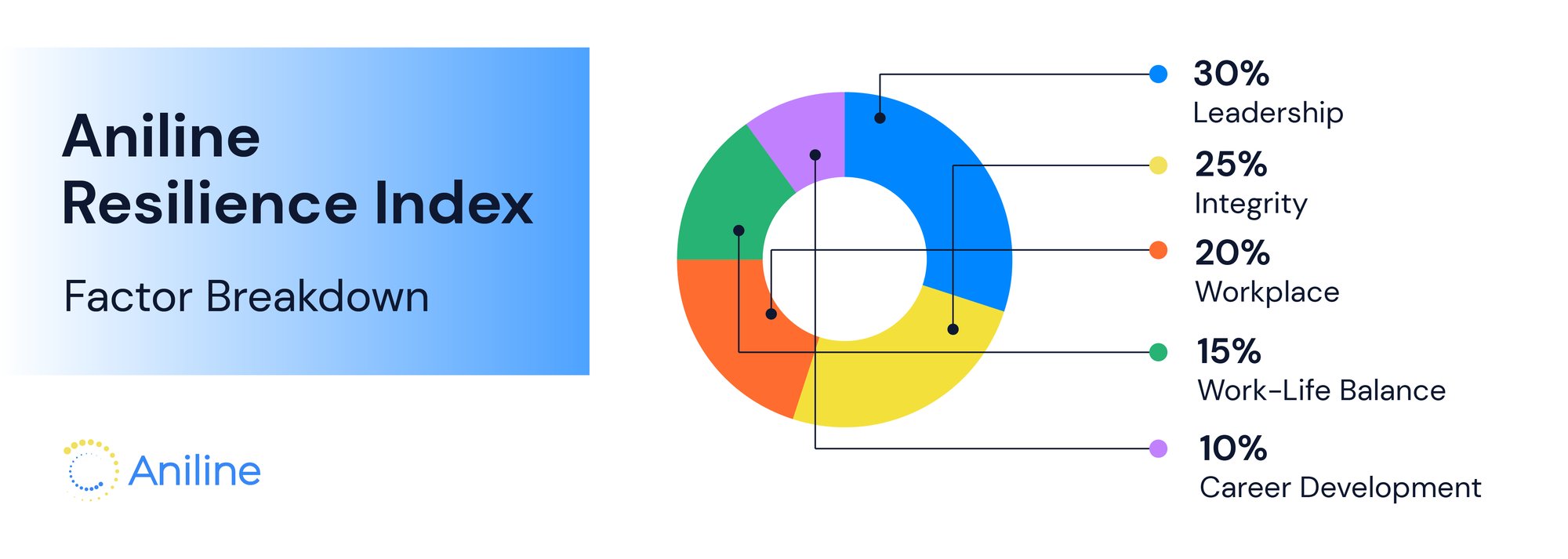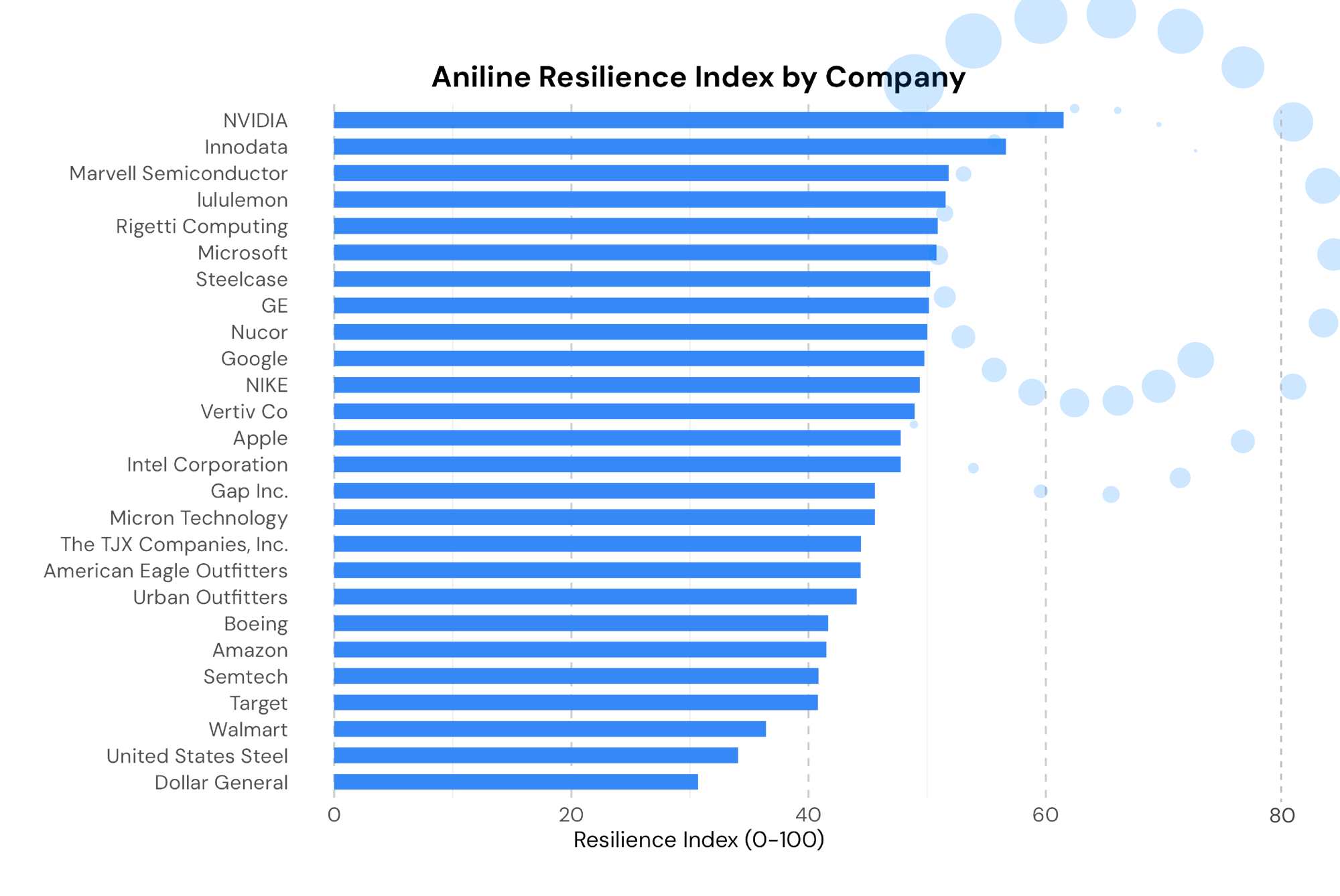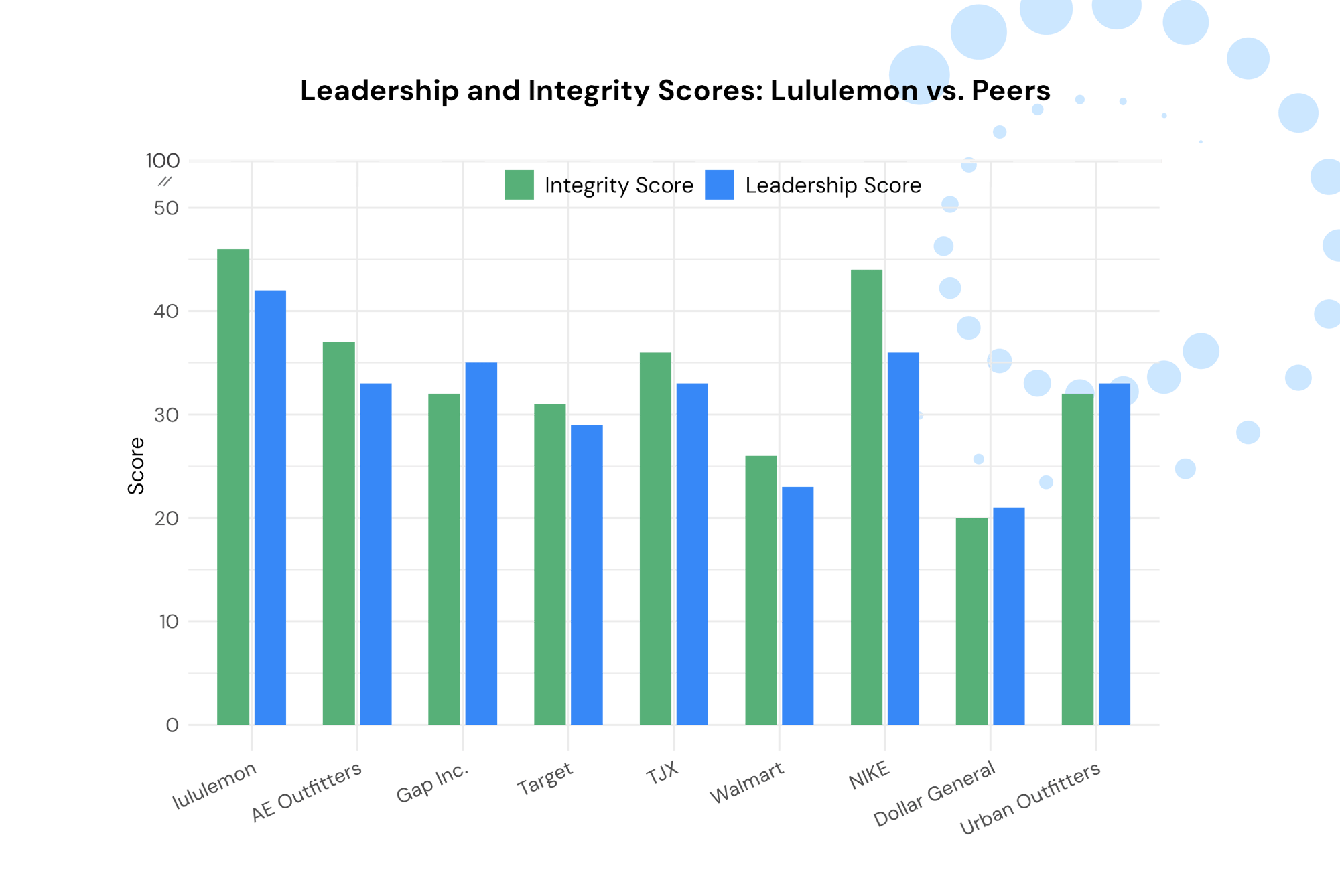Measuring Business Resilience: Which Companies Are Built To Thrive, Survive Or Stumble In Turbulent Times
Finding Value In Volatility: Beyond The VIX
In our volatile business landscape, turbulence has become the norm rather than the exception. Knowing a company's ability to withstand sudden shocks is more critical than ever. The CBOE Volatility Index (VIX) – Wall Street's "fear gauge" – is a standard measure of market instability we all intuitively feel, including recent major spikes. But it only tells half the story. Resilience is the counterweight to volatility. Understanding a company’s ability to capitalize on volatility rather than be victimized by it, enables predicting winners and losers. Understanding its individual elements provides a roadmap to success. But how to measure resilience? Aniline has developed the newest and most advanced metric of resilience, the Aniline Resilience Index (ARI).
The Aniline Resilience Index fills an essential gap, providing an objective measure of business resilience as a counterweight to the VIX. While markets fluctuate, ARI reveals which companies possess the structural foundation to not just survive disruption, but capitalize on it.
Measuring What Matters: The Science Behind ARI, Predicting Business Resilience
The Aniline Resilience Index (ARI) is a groundbreaking measurement tool that quantifies an organization's ability to withstand, recover and thrive in disruption. Unlike traditional metrics that look backward at financial performance, ARI looks forward at a company's capacity to navigate future challenges. Grounded by 1 Billion workforce data points, ARI captures five critical, quantifiable components and their relative weight in defining organizational resilience:

These underlying characteristics enable critical capabilities in times of volatility and uncertainty, supporting critical elements like dynamic decision making, efficient allocation of time and resources, agility, strong support systems, and empowered teams.
A body of research from leading organizations supports this approach, underscoring the importance of taking a multifaceted approach to understanding resilience and affirming that leadership and culture are not just contributors to resilience, but essential components. Recent McKinsey research identifies adaptable leadership and investments in talent and culture as defining characteristics of resilient organizations. The Enterprise Research Centre’s 2022 study “Building Better Business Resilience” affirms the pivotal role of leadership in helping small and medium enterprises to withstand economic shocks, while FourWeekMBA’s work on organizational structures highlights how leading financial institutions have developed resilience through deliberate leadership and cultural strategies that go well beyond industry positioning. Similarly, BCG's 2022 study “Operational Resilience is Key to Thrive in Disruptive Times” emphasizes that operational resilience requires a framework that addresses people, processes, and technology, and JP Morgan’s “Business Resiliency” insights emphasize that resilience isn't just about financial buffers but about creating organization-wide systems that can adapt to changing conditions – precisely what ARI measures.
The Aniline Resilience Index in Action
We took a close look at 26 high-profile companies across technology, manufacturing and retail sectors, analyzing these companies’ resilience scores.


2. Market position isn’t everything.
Resilience is not reserved for giants. While tech leaders like NVIDIA and Microsoft score highly, it's not just the usual suspects at the top. Innodata, a mid-size data and content company, ranks second in resilience - outperforming Apple, Google, and Amazon. With relatively strong scores in leadership (53/100) and integrity (57/100), Innodata demonstrates that cultural health, not just scale or brand power, drives resilience. Its strong cultural foundation, especially in leadership and integrity, demonstrates how smaller companies can lead the way when it comes to operational adaptability.
Resilience is not only accessible to dominant players with deep financial reserves. In fact, the ARI reveals that cultural investment is a scalable advantage, even for lesser-known firms.
3. Great scores in one area can’t compensate for leadership gaps.
Some companies post strong scores in areas like benefits or career development, but if leadership and integrity are weak, their overall resilience suffers. Dollar General, for instance, offers decent scores in benefits (75/100) and workplace (55/100), but its leadership (21/100) and integrity (20/100) scores drag its resilience score down to 30.70 - the lowest in the analysis.
This highlights a key insight: compensation alone doesn’t build resilience. Organizational health hinges on how teams are led, not just how they are paid.
Opportunity in Chaos: How Resilient Companies Transform Crisis into Competitive Advantage
The most resilient organizations don't just survive disruptions – they capitalize on them, often emerging stronger than before. As McKinsey's 2023 article “What is Resilience and Resiliency?” emphasizes, truly resilient organizations "don't just bounce back from misfortune or change; they bounce forward." Further research on strategic resilience from McKinsey highlights the importance of shifting from defensive risk mitigation to proactive opportunity creation.
Implementation Strategy: Building Resilience
For organizations looking to enhance their resilience, our analysis suggests a clear roadmap:
- Leadership Capability Development (highest ROI investment)
- Establish quarterly crisis simulation training
- Develop middle management resilience programs
- Implement decision frameworks that maintain integrity while accelerating response
- Deploy leadership consistency metrics with succession depth targets
- Integrity System Enhancement
- Develop standardized ethical decision matrices
- Implement quarterly stakeholder trust assessments
- Establish transparency protocols for crisis communication
- Deploy supplier integrity assessments
- Workplace Culture Resilience
- Create innovation incentive systems
- Implement cross-functional crisis response teams
- Deploy agile methodologies beyond technology teams
- Establish resilience recognition programs
The Case for Measuring What Matters
In a business landscape increasingly defined by volatility and unpredictability, the Aniline Resilience Index offers organizations an evidence-based approach to understanding and enhancing their adaptive capacity. The data is clear: resilience isn't primarily about industry, size, or even financial resources - it's about leadership, integrity, and culture. Whether you’re evaluating investment risk, vendor stability, or workforce strategy, the ARI helps you identify which organizations are built to bend, not break.
The Aniline Resilience Index supports this evolution by providing unprecedented visibility into previously unmeasurable organizational capabilities. Organizations that excel in these dimensions don't just survive crises; they transform challenges into strategic advantage. For business leaders navigating today's uncertain terrain, the ARI provides not just a diagnostic tool but a compass pointing toward the investments that truly matter for long-term success in a volatile world. By focusing on the human and cultural dimensions that truly drive resilience, organizations can build the adaptive capacity needed not just to weather the storms ahead, but to harness their energy for transformative growth.
Curious About a Company's Resilience Score?
Which organization would you like to see analyzed with our Aniline Resilience Index? We're continuously expanding our database and prioritizing companies our readers care about most.
.png?width=4334&height=1355&name=Logo%20with%20name_Blue+Yellow%20(1).png)